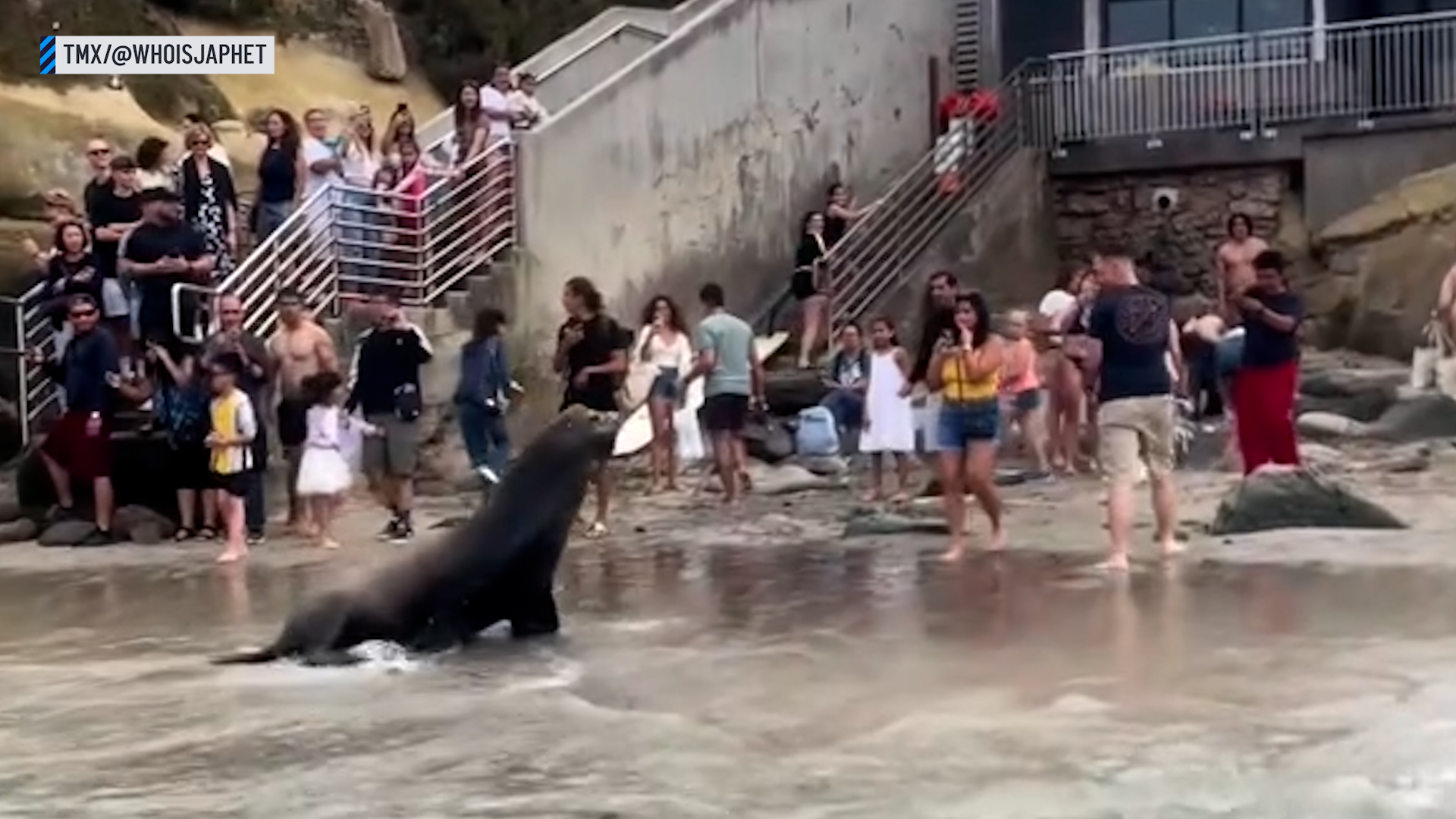On Thursday morning, SeaWorld's Animal Rescue team released a sea lion that had been treated for exposure to toxic algae.
Seventeen sea lions and a dolphin have been taken in for treatment at Sea World since the outbreak of domoic acid poisoning off the Southern California coast.
Off the San Diego Coast
Kim Peterson, a rescue curator at SeaWorld, said thousands of sea mammals, especially from Orange County to Ventura County, were impacted.
Get San Diego local news, weather forecasts, sports and lifestyle stories to your inbox. Sign up for NBC San Diego newsletters.
"This time around — though not in San Diego — along the California coast was one of the worst outbreaks of domoic acid toxicity that I’ve seen in my history here," Peterson said.
Domoic acid is produced by the algae that cause red tides, according to Peterson, who added that the reason it's been at a higher level this year has to do with the runoff from winter storms.
Domoic acid toxicity affects the brain and heart in sea lions — the more the marine mammals consume, the greater impact it can have on their bodies and conditions.
"[Within] the algae is a substance called pseudo-nitzschia, and it is a toxin that does not affect fish," Peterson said. "So the fish consume the algae as part of their normal diet, then the marine mammals and seabirds will eat the fish, and it is toxic to them.”
Depending on the amount they consume, sea mammals like sea lions can experience various symptoms .from lethargy to tremors to seizures. Peterson said each case is different and treatment includes medication and fluids. When rescuers find these animals, they don't know what to expect.
”We don’t know when we pick an animal up what their outcome is going to be," Peterson said. "As soon as we hear about a red tide, we are watching animals for the very classic signs of domoic acid toxicity.”
The adult female sea lion released Thursday was in rough shape when she was brought in weeks ago.
"Her initial condition was very poor," Peterson said. "She was completely unresponsive for days."
Luckily, that changed.
“We were able to get all those fluids into her," Peterson said.
Which is why Thursday was important.
"SeaWorld is going to continue rescuing animals as long as animals are in need," Peterson said.
Two additional sea lions being treated for domoic acid toxicity at SeaWorld are expected to be released back into the Pacific Ocean next week.




